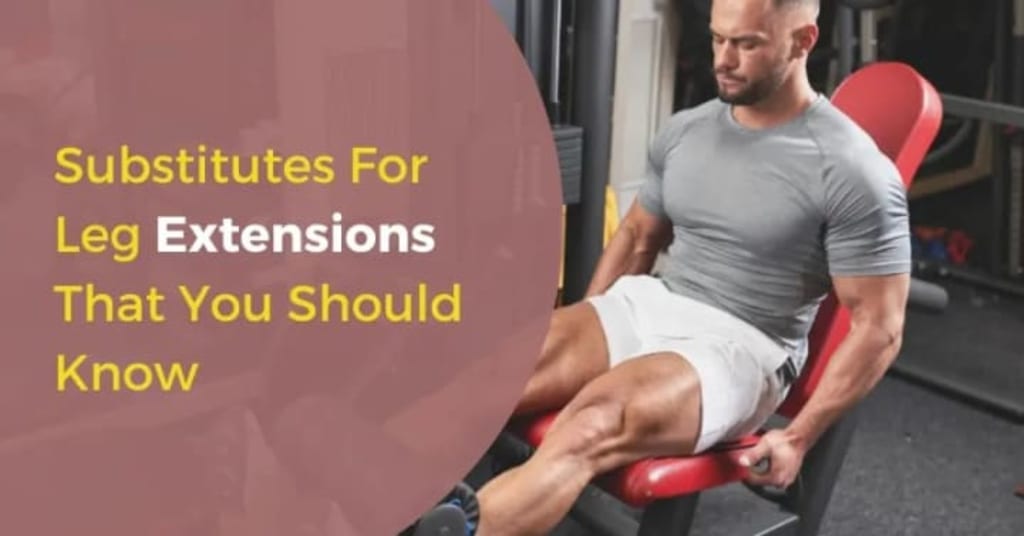
Do you too wonder why you should consider alternatives to leg extensions? You do need them, but not at this hour. To learn why, read on down below. But first, let's have a brief introduction to the subject. Leg extensions are a common way for bodybuilders to add more bulk to their quads, or the huge muscles in front of their legs.
Leg extensions are something everyone should think about doing at the end of their workout. After a vigorous lower body workout, it aids with quad burnout and is an isolated exercise.
Leg extensions, though, may be a pain (especially if you include them in your training routine for a few weeks), and having access to the machine can sometimes make it worse. Fortunately, other advantages that work on the same muscles can be used.
Leg extensions workout what muscles?
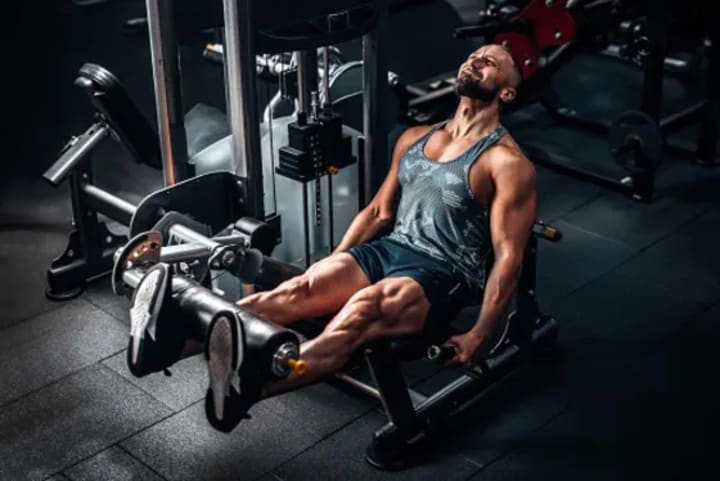
The quadriceps will, of course, be the primary muscles used to stretch the leg. Both stretching and hip flexion depend on this. The quadriceps' rectus femoris muscle flexes the hip, which is more tougher than moving the knee.
It's unusual that only the quadriceps muscles are affected by this activity. Whatever your preferred leg workouts, you have a greater chance of developing glutes, hamstrings, and even stability.
It is not a leg extension; rather, it is an entirely isolated exercise with no discernible benefit for hamstring or glute training. By attempting to twist your hamstrings and quadriceps at the same time, you can utilise it to enhance your hamstring control, but it won't load them. Compared to low physical activity.
5 Simple Alternatives to Leg Extensions
1.cable leg extensions
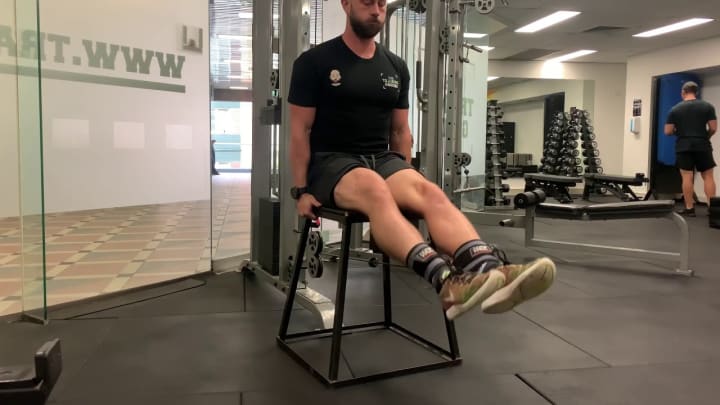
The cable leg extensions isolate and primarily focus on the quads when seated or standing on a box. As a better alternative to the conventional leg extension, this leg extension substitute is extremely similar to leg extensions.
WHAT TO DO?
1.Tie a cable stack-connected ankle cuff.
2.Place yourself facing away from the cable stack when you stand or sit.
3.Once your knee is fully extended, kick.
4.Next, bend your leg such that it forms a 90-degree angle.
BONUS TIP:
A leg extension can be a significant exercise that can be beneficial to your system if you have a knee or hip issue. Any knee injury can be helped to heal by restoring range of motion and increasing quad flexibility using cable leg extension.
2. Leg Extension using Dumbbells
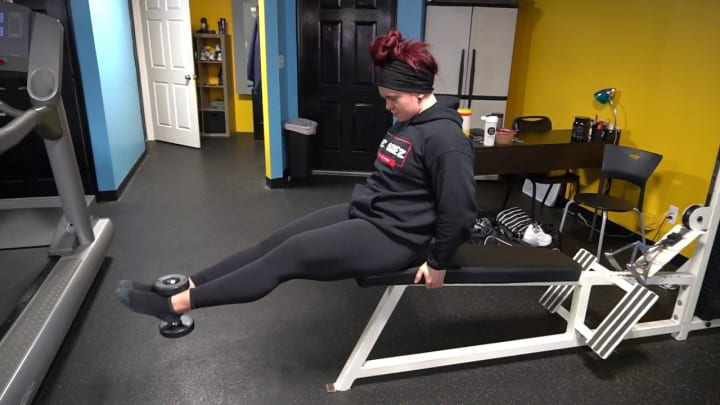
Although this alternative to a leg extension is a version of that motion, it differs significantly from a leg extension machine. Dumbbell leg extensions are fantastic to do on the go or in place of a home leg extension because they can be performed anywhere.
WHAT TO DO:
1.Start by taking a seat on a stable surface, such as a bench.
2.Lift the dumbbell so that it is just above your ankles.
3.Legs should be stretched out till the knee is fully extended.
4.until you reach the beginning position, control the weight.
BONUS TIP:
You won't be able to load the dumbbells like a machine for this workout because they are free-weights. Select three dumbbells of varying weights to create pull sets in order to get the most out of this.
By performing 10 sets of big loads before diving into a sequence of low loads, you may make the most of your limited resources.
3.Bulgarian Split Squat.

For this exercise that replaces leg extensions, 10 or more reps are recommended for each leg.
WHAT TO DO:
1.Take two steps away from the bench while maintaining your feet.
2.Put yourself in a position where you have your back to the bench.
3.Next, carefully place a foot on the bench.
4.Make sure your foot is flat on the bench at the top.
5.Place your legs shoulder-width apart while keeping your hips forward.
6.Now descend into a descending squat position by bending both knees.
7.Your front leg's thigh ought to be parallel to the ground.
8.Always keep your back thigh straight from the lowest portion.
9.Put pressure on your back while bringing your front foot down.
BONUS TIP:
If you want to win the Bulgarian section squat, you might want to make some adjustments. To put it in a low, safe location is a great advice. Your rear foot is pressed firmly against the bench or step, your front thigh is parallel to the floor, and your back thigh is at the top.
From this point on, your form will be more stable, allowing you to press from the ground and stand without losing your balance. If necessary, use anything fixed nearby to aid in your equilibrium.
4. Step-ups
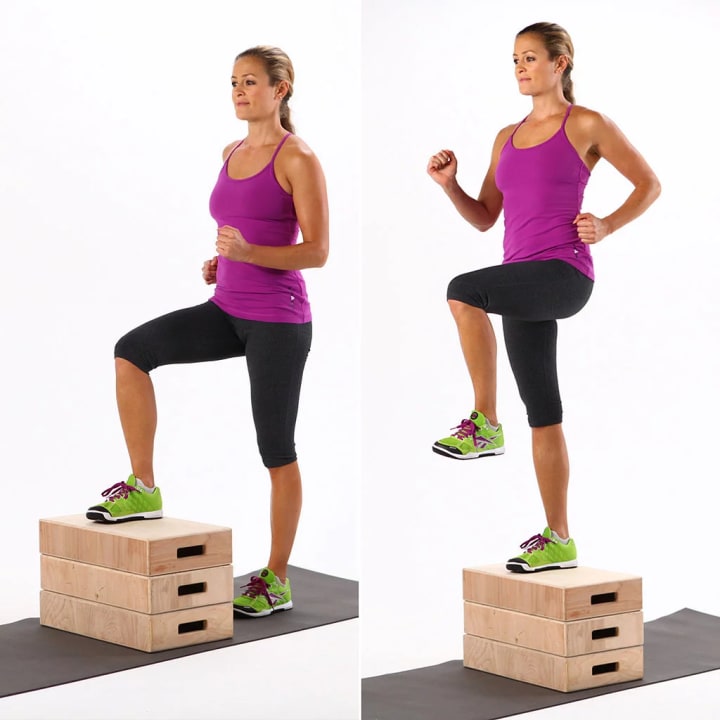
This leg extension substitution exercise should be performed between 10 and 12 times for each leg.
WHAT TO DO:
1.Start by putting one foot or so away from the step or bench.
2.Grasp the bench with one foot and the ground with the other.
3.Leaning onto your front foot, hinge your hips slightly.
4.Push the bench to stand up while removing the weight from your front foot.
5.Keep the same foot firmly placed on the bench while bending your knees just a little to lower the other foot to the ground.
BONUS TIP:
Strength exercise that involves climbing stairs works best without jumping or sprinting. It is uncommon for folks to notice a bounce when attempting to walk upon the bench.
Instead, think about using a bench to support your standing. The quads and glutes are stimulated by this. Your stamina and balance will be put to the test as you slow down. Sit on the bench at all times when working out your right leg to benefit from eccentric contractions and loading.
5. Backward Lunge

For each leg, 10 to 12 reps are the recommended number.
WHAT TO DO:
1.Put a shoulder-width distance between your feet.
2.Keeping your feet shoulder width apart, send one foot straight back.
3.By making a 90-degree angle at both knees, maintain the tension in the front and lower leg.
4.Regain your fitness by shifting a lot of your weight to your front foot.
BONUS TIP:
Most of the weight is taken off the front foot by slightly leaning the front leg over the active leg. This aids with quad separation and balance restoration for the body. If necessary, use anything fixed nearby to aid in your equilibrium.





Comments
There are no comments for this story
Be the first to respond and start the conversation.